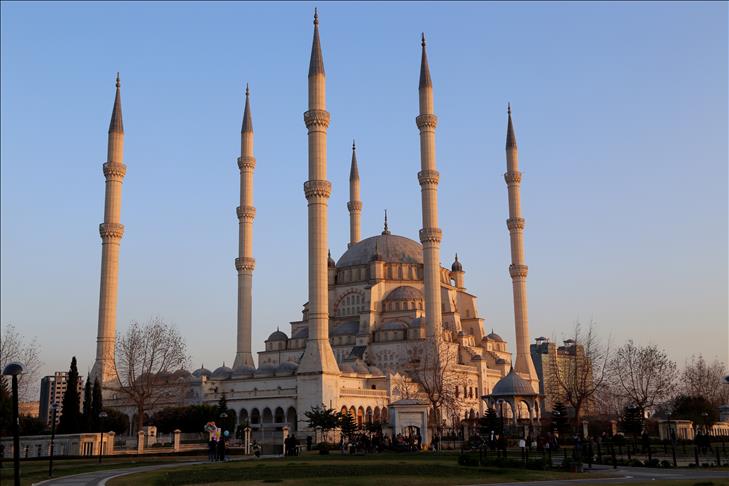
ADANA
By Mustafa Caglayan
Esoteric and mystical symbolism is often found encoded in the ancient and medieval examples of shrine architecture, but the architectural features of Sabanci Central Mosque in Turkey's southern city of Adana offers a modern - albeit a bit too overt - case of religious symbolism.
The physical dimensions of the mosque, the largest in Turkey, lay bare the employ of numerological cues in its architecture.
Mosque architecture of Turkey's republican era is often criticized for merely imitating famous mosques of the Ottoman classical age, particularly major works by the seminal architect (Mimar) Sinan.
Sabanci Central Mosque is no exception in this sense, as its complexion highly resembles Istanbul's renowned Suleymaniye, while its interior features try to imitate Sultan Ahmed Mosque, also known as the Blue Mosque, of the former Ottoman capital.
- ‘Pillars’ of religion
Despite this, its architect endeavored to add some mystical flavors unfamiliar to many mosques built in the country's modern era.
Numerology served as the primary vehicle for this, as the mosque's structure contains correlations with certain numbers that are regarded significant within the Islamic thought.
"The main dome of the mosque is 32 meters in diameter, which corresponds to the 32 fards [binding religious duties] in Islam", said Ihsan Yegen, deputy religious affairs director of Adana province.
In Islamic thought, a fard is a binding religious duty commanded by Allah, including the fundamentals, or the pillars, of faith and the religion.
Quran mentions Allah by 99 different names. This number is also represented in the building, as four of the mosque's six minarets are 99 meters high each.
"The main dome contains 40 windows, which are meant to reflect the age at which Prophet Mohammad's prophethood began," Yegen said.
The mosque features four half-domes and five full domes, which, according to Yegen, correlate with the four Rashidun caliphs and five major duties in Islam respectively. The four caliphs after Prophet Mohammed are highly regarded in Islam, while the five duties make up the foundations of Muslim life.
Yegen also said that the mosque contains six minarets after the six articles of believer's faith, namely the belief in God, the angels, the prophets, the divine books, the day of judgment, and fate.
Completed in 1998, Sabanci Central Mosque can hold up to 28,000 worshippers.
englishnews@aa.com.tr
Anadolu Agency website contains only a portion of the news stories offered to subscribers in the AA News Broadcasting System (HAS), and in summarized form. Please contact us for subscription options.

